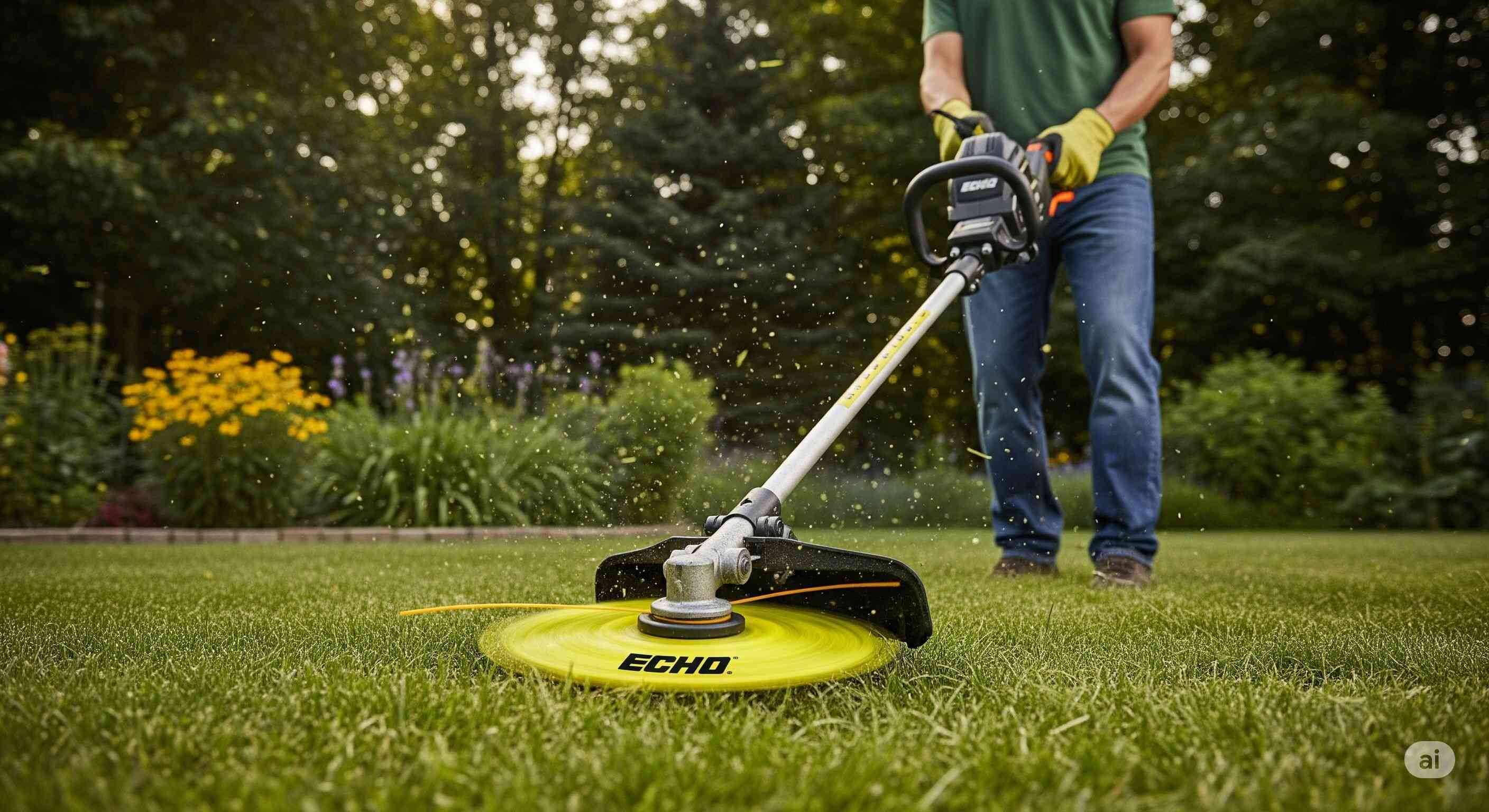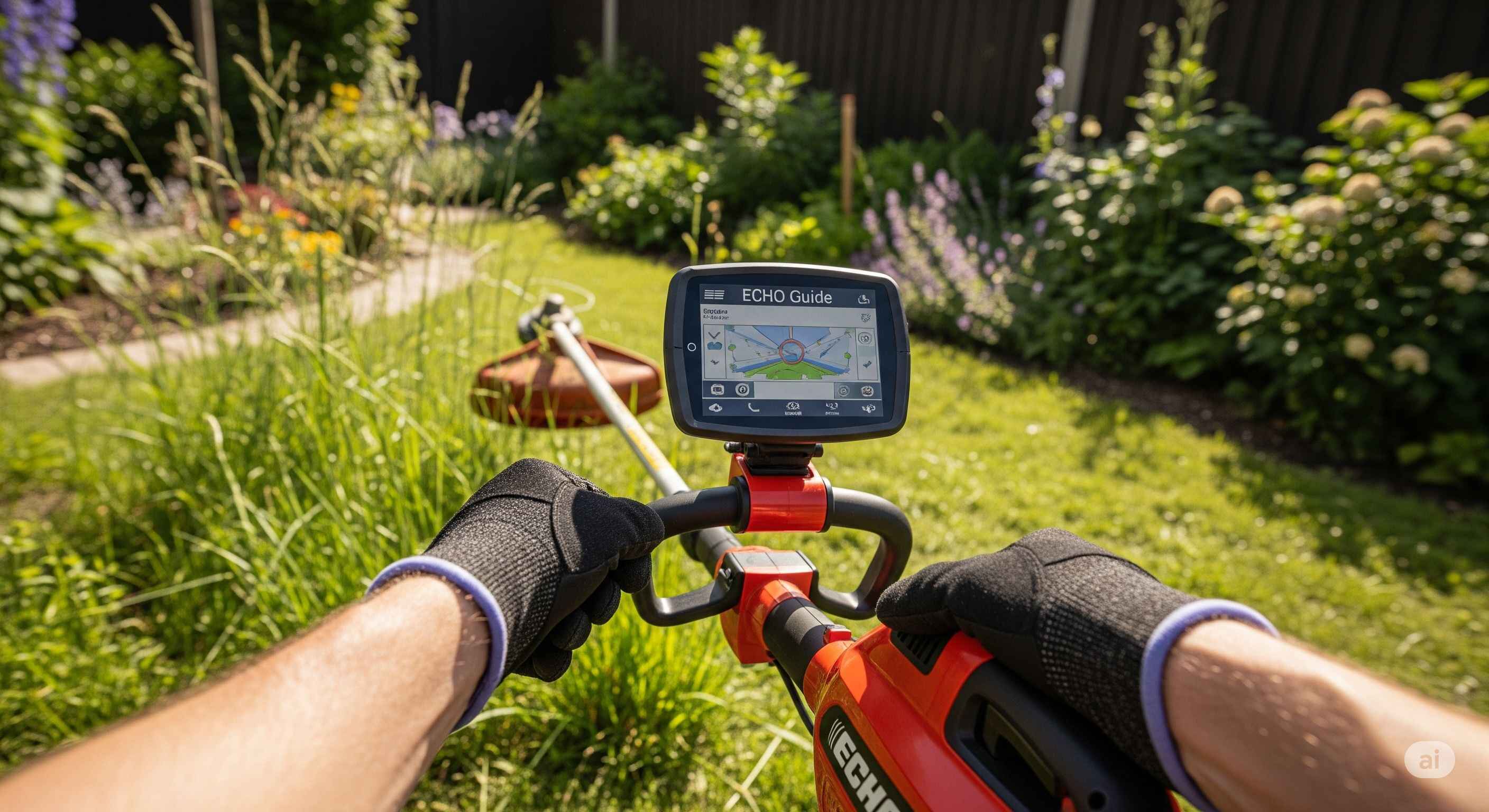ECHO Weed Eater Trimmer Line: Installation, Maintenance, and Troubleshooting
ECHO weed eaters are designed to assist you in finishing lawn care fast, neatly, and efficiently. From edging fences to trimming flower beds, the key to saving time is in knowing how to use your tool appropriately and maintain it without breaking your rhythm.

With advice on how to start your trimmer, how to change the string, and how to troubleshoot issues, this guide is dedicated to maximizing the use of your weed eater in the shortest amount of time possible.
If your ECHO string trimmer will not start, needs a quick restring, or shows wear you are not sure how to fix, you've come to the right place. From basic string replacement to dealing with damaged parts, we assist in getting your trimmer functional again with the proper parts and easy-to-follow instructions.
How to String an ECHO Weed Eater: Step-by-Step
Replacing the string trimmer line on your Echo SRM‑225 doesn't have to be a chore. It's one of the simplest maintenance tasks you can do—and this KnowHowNow video shows you exactly how to do it fast, cleanly, and without frustration.

Here's the step-by-step process of how it's done, and what's most critical if you'd like to keep your Echo trimmer cutting like new.
Step 1: Remove the Bump Head Cap
Start by inverting the trimmer. Depending on the model, the bump head cap either snaps off under pressure from the sides or twists off. Inside, you'll find the spool and a spring—carefully remove both.
Step 2: Measure and Prepare the Line
Use .095" or .105" trimmer line. Cut a piece recommended by your echo trimmer parts manual (usually 20 feet), then fold it in half to find the midpoint. This loads both sides of the spool evenly.
Put each end of the line through the correct eyelets and begin winding in the arrow's direction—usually clockwise.
Step 3: Load and Wind Properly
Be sure to wind the line evenly and tightly. This will prevent jamming and allow for smoother feeding when utilizing the bump feed system. Leave approximately 6 inches of line protruding from each side upon completion.
Step 4: Reassemble the Spool
Replace the spool and spring into the head. Align holes in the spool with eyelets in the housing so the line feeds freely. Snap the bump cap back on until it clicks or locks into place.
Final Test: Bump and Go
Turn on the trimmer and hit the head on the floor. If it feeds the line correctly, you succeeded. If not, open it again and search for a tangled or crossed line.
You can find the following parts in our store.
Why This Matters
Whether you’re trimming the edge of your yard or clearing heavy grass, a properly loaded head makes your job faster, safer, and cleaner. Echo’s technical design makes the replacement simple, as long as you follow the right winding direction and use the correct line size.
This is one of those quick wins: no tools, no frustration—just a few minutes of prep for smooth cutting all season.
How to Start an ECHO Weed Eater Properly
Many customers ask how to start an ECHO weed eater—especially if they have no experience with a 2-cycle engine. Use this simple procedure:
- Move the switch to the "on" position.
- Prime the bulb 5–6 times, and you will see fuel.
- Set the choke to the closed position.
- Pull the starter rope until the engine comes up for a brief moment.
- Move the choke to the run position and pull again to fully start.
What Size Eater String for ECHO?
The string size depends on your model, but most ECHO weed eaters use either 0.080" or 0.095" line. For lighter, residential use, stick to 0.080". For heavier trimming or commercial jobs, 0.095" provides more strength and durability without slowing the tool down.
Using the correct line size helps avoid performance issues like the trimmer bogging down when you give it gas, a common complaint linked to incorrect string type or engine strain.
Quick Troubleshooting When You're There
If your ECHO trimmer won't work properly, it could be related to simple repairs:
- Why won't my ECHO weed eater begin? Nine out of ten times, it's because it contains stale fuel, a plugged air filter, or a filthy spark plug.
- ECHO weed eater bogging when I open the throttle? That generally means that the carburetor or fuel lines need to be cleaned.
- New to this? Here's how to start an ECHO weed cutter: prime the bulb, put the choke, pull to fire, then set the choke to run and pull again.
You can fix these issues easily, remaining on course.
How Much Is an ECHO Weed Cutter
Prices are model-dependent, but if you're considering how much an ECHO weed eater costs, their entry-level models begin at about $160, and stronger, commercial-style models will be in the $300 or more range. Considering the speed and convenience you receive, most users feel that ECHO is a good value.
Final Thoughts
When it comes to the quickest method to replace a string on a weed eater, ECHO's Speed-Feed head is unbeatable. It converts what once was a 10-minute task into a 30-second task. Paired with consistent performance, easy starting, and a reasonable price tag, it's not surprising that so many customers opt for ECHO time and time again.
Recent Posts
-
ECHO Weed Eater Trimmer Line: Installation, Maintenance, and Troubleshooting
ECHO weed eaters are designed to assist you in finishing lawn care fast, neatly, and efficiently. Fr …Jul 17th 2025 -
ECHO vs. STIHL: What You Need to Know Before Choosing a Brand
Echo and STIHL are known for building powerful and reliable tools, but they serve slightly different …Jul 17th 2025 -
ECHO Guide For Weed Eaters: Replacing, Performance, and Tips For Maintenance
ECHO is a name you’ll come across often—and for good reason. Known for their durable bui …Jul 17th 2025
